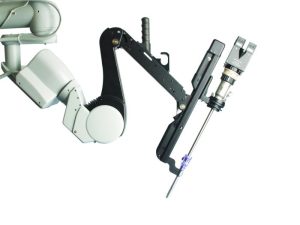Medical device packaging solutions are critical for ensuring the safety, efficacy, and sterility of medical devices throughout their lifecycle. From initial manufacturing to delivery to the end-user, the packaging plays a vital role in protecting sensitive instruments and pharmaceuticals, preventing contamination, and maintaining product integrity. This comprehensive overview explores the market landscape, various packaging types, sustainability concerns, innovative advancements, and the overall impact on patient care and medical services.
The medical device packaging industry is a dynamic sector influenced by evolving regulatory requirements, advancements in materials science, and a growing emphasis on sustainability. Understanding the intricacies of this field is crucial for manufacturers, healthcare providers, and regulatory bodies alike. This exploration delves into the key aspects of medical device packaging, providing insights into current trends, challenges, and future prospects.
Market Overview of Medical Device Packaging Solutions
The medical device packaging market is a dynamic and crucial sector, experiencing significant growth driven by the increasing demand for medical devices globally, coupled with stringent regulatory requirements ensuring patient safety and product efficacy. This overview examines the market’s current state, key segments, and the regulatory landscape shaping its evolution.The global medical device packaging market is substantial and projected to expand considerably in the coming years.
While precise figures vary depending on the source and methodology, market research consistently indicates a compound annual growth rate (CAGR) in the range of 5-7% from 2023-2028. This growth is fueled by factors such as an aging global population requiring more healthcare, technological advancements in medical devices leading to more sophisticated packaging needs, and the increasing prevalence of chronic diseases.
For example, the rise in diabetes has significantly increased the demand for insulin delivery systems and their associated packaging.
Market Segmentation of Medical Device Packaging
The medical device packaging market is highly segmented, categorized by various factors influencing packaging design and material selection. These factors ensure optimal product protection, sterility, and ease of use.
- By Device Type: Packaging solutions vary significantly depending on the medical device. For instance, implantable devices require sterile, hermetically sealed packaging, unlike diagnostic tools which might necessitate more robust, reusable packaging. This segmentation includes categories such as implantable devices, diagnostic tools, surgical instruments, drug delivery systems, and in-vitro diagnostic (IVD) devices.
- By Material: The choice of packaging material is critical, impacting product sterility, barrier properties, and environmental impact. Common materials include plastics (polypropylene, polyethylene, PVC), paper and paperboard (often used in combination with other materials for enhanced protection), and glass (primarily for sensitive pharmaceuticals and certain device components).
- By Sterilization Method: The packaging must be compatible with the sterilization method employed, which might include ethylene oxide (EtO), gamma irradiation, or steam sterilization. Each method necessitates specific packaging materials and designs to ensure effective sterilization without compromising the device’s integrity.
Comparison of Packaging Materials
Different packaging materials offer unique advantages and disadvantages. Plastics offer versatility, cost-effectiveness, and good barrier properties, but concerns exist regarding their environmental impact and potential leaching of chemicals. Paper-based solutions are environmentally friendly and readily recyclable, but may offer less robust protection against moisture and oxygen. Glass provides excellent barrier properties and is inert, but it is fragile and more expensive than plastic alternatives.
The optimal material choice depends on the specific device and its requirements. For example, a single-use syringe might use a plastic blister pack for individual protection and easy dispensing, while a high-value implantable device might be packaged in a multi-layered, sterile, and tamper-evident pouch incorporating a combination of materials.
Regulatory Landscape and Compliance Requirements
The medical device packaging industry operates under a strict regulatory framework to guarantee product safety and efficacy. Compliance with regulations such as those set forth by the FDA (in the United States) and the EMA (in Europe) is paramount. These regulations cover various aspects, including material biocompatibility, sterilization validation, labeling requirements, and traceability. Manufacturers must demonstrate rigorous quality control measures throughout the packaging process, ensuring that the packaging itself does not compromise the safety or efficacy of the medical device.
Failure to comply can result in significant penalties, product recalls, and reputational damage. Compliance requires meticulous documentation, rigorous testing, and ongoing monitoring of regulatory updates.
In conclusion, the field of medical device packaging is constantly evolving to meet the demands of a sophisticated healthcare landscape. The need for robust, sterile, and sustainable packaging solutions is paramount, driving innovation in materials, design, and manufacturing processes. By embracing sustainable practices and leveraging technological advancements, the industry can ensure the safe and effective delivery of medical devices while minimizing its environmental footprint and maximizing patient safety.
Questions and Answers
What are the most common materials used in medical device packaging?
Common materials include plastics (e.g., Tyvek, polypropylene), paper, and glass, each chosen based on the specific device and its requirements for sterility, barrier properties, and environmental impact.
How is medical device packaging sterilized?
Sterilization methods vary depending on the packaging material and device. Common methods include ethylene oxide (EtO) sterilization, gamma irradiation, and steam sterilization.
What are tamper-evident features in medical device packaging?
Tamper-evident features, such as seals or labels that break or change upon opening, help ensure product integrity and prevent unauthorized access or tampering.
What are the implications of improper medical device packaging?
Improper packaging can lead to contamination, device damage, reduced efficacy, and potential harm to patients. It can also result in regulatory non-compliance and product recalls.


